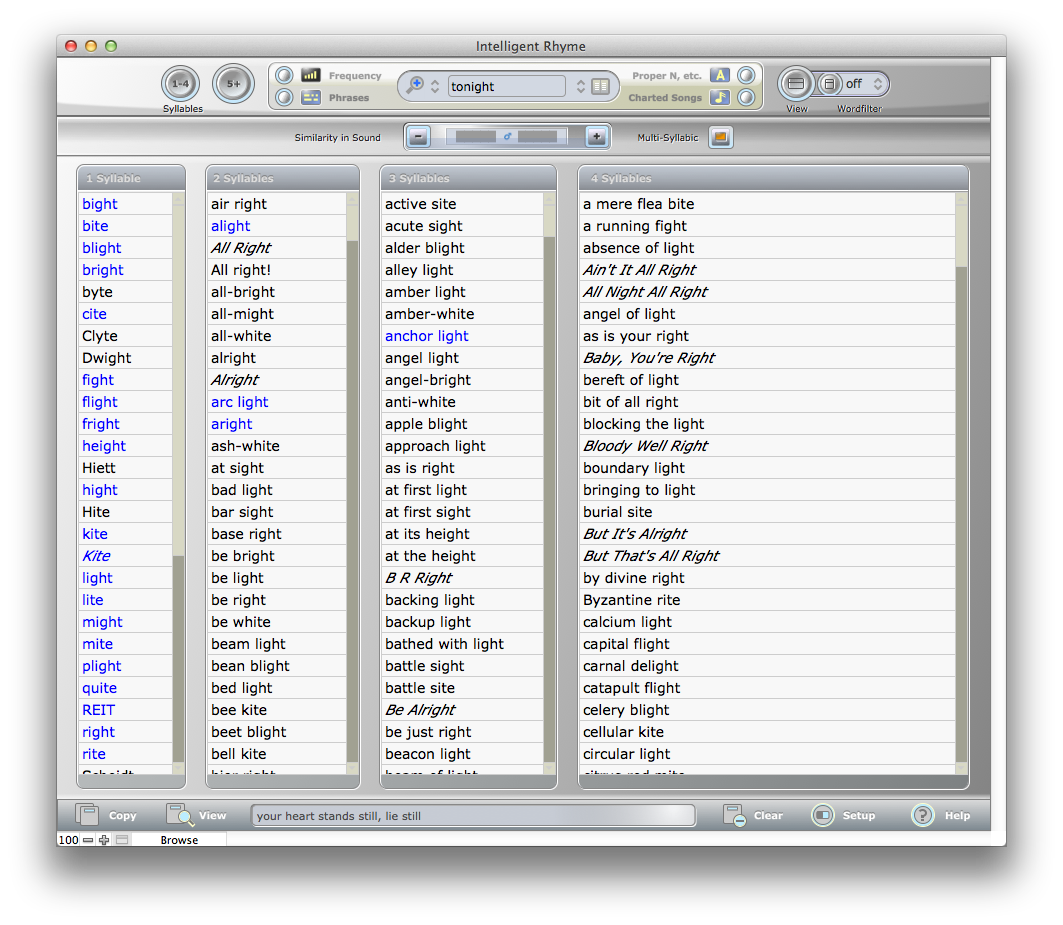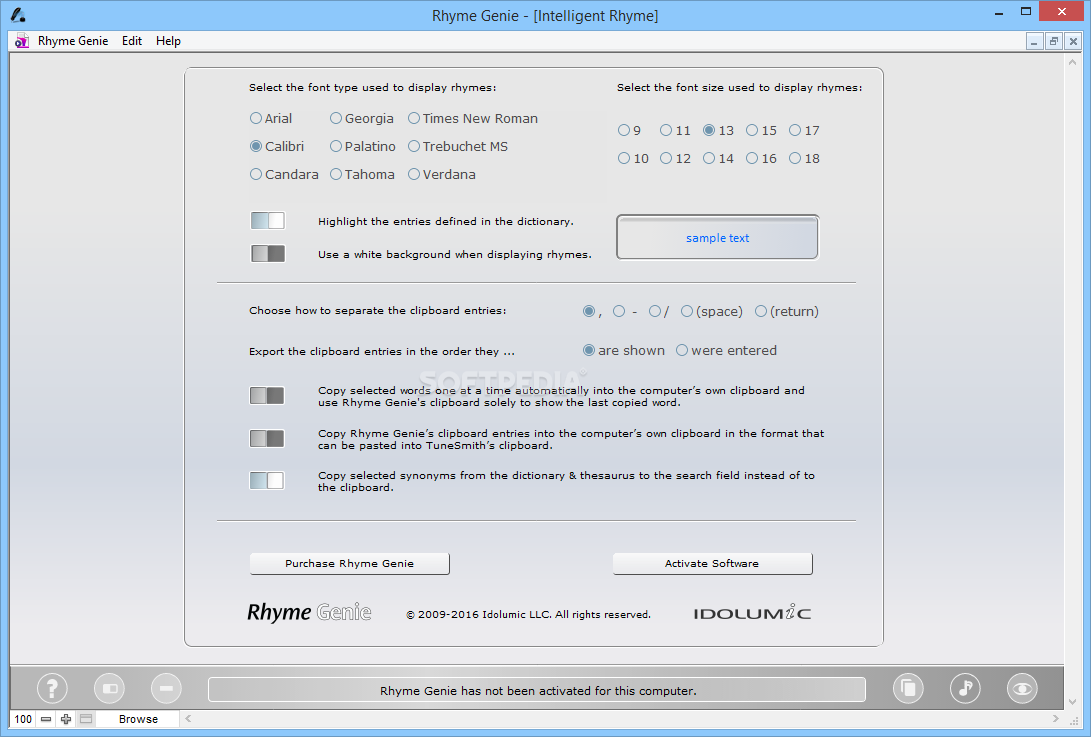

Get inspired by one of the largest collections of American sayings, idioms, clichés, popular names, places and trademarked brands. Change from one-syllabic to multi-syllabic rhymes with a single click and see a wealth of near rhymes appear by simply decreasing the similarity in sound. Instantly find perfect rhymes as easily as entering a word and charm your muse with a powerful intelligent rhyme algorithm. Other types of position rhymes include internal rhymes, where a word in the middle of a verse rhymes with an ending word or phrase, and holorimes, where two lines have the same sound.With over 300,000 entries exceeding 170,000 phrases, 35,000 proper nouns and 48,000 titles of charted songs Rhyme Genie is the ultimate rhyming dictionary for songwriters, lyricists, poets, jingle writers, copy writers and wordsmiths alike. For example, a tail rhyme denotes a rhyme located in the final syllables of each verse and is the most common type of position rhyme. Lastly, position rhymes, as the term suggests, get classified according to their position in verses. For example, tough and cough, shove and move. Eye RhymeĮye rhymes are words that end in the same spelling as another but is pronounced different.


If a person who hears it, automatically substitutes the real word for the substitution, a mind rhyme has occurred. In short, Mind rhyming is substituting an alternate word for word that would make sense in the position. That’s because the suggestion of a rhyme stops short, or the expected word gets replaced with another word (which may or may not have the same meaning). Sometimes known as subverted rhymes, mind rhymes are a fun way of teasing the reader or audience. Identical rhymes can sometimes get frowned upon in some literary circles as audiences may feel the lines are getting repetitive or that the author is “cheating.” Sometimes, the word used might have different meanings in each sentence. Put simply, an identical rhyme is where the same word gets used twice - for example, using “The” to begin or end two sentences. Alliteration - the initial consonants sound the same, chair and chariot.Consonance - the consonants match as in rabies and robbers.Syllabic - each syllable of each word sounds the same, but doesn't always contain the same stressed vowels.With general rhymes, the classification gets done according to the level of phonetic similarity between words. In a nutshell, a general rhyme is where there is some phonetic similarity between words. Dactylic, this class starts the stress on the third from last syllable.This class is based on the second from the last syllable as in sticky and tricky. Single, which is also known as "masculine" rhymes, rhymes the last syllable.Here is a breakdown of the different classes of perfect rhymes: There’s also a third type of perfect rhyme, the dactylic, where the stress gets placed on the third from last syllable (for instance, the words “glamorous” and “amorous”). For example, single or masculine perfect rhymes place stress on the final syllables, whereas double or feminine perfect rhymes place stress on the second from last syllables. Where one rhyme type may not work, another might.Ī perfect rhyme is where words sound similar in their final stressed syllable. Learning the different types of rhymes is a great way for a poet to expand his/her portfolio of knowledge.


 0 kommentar(er)
0 kommentar(er)
